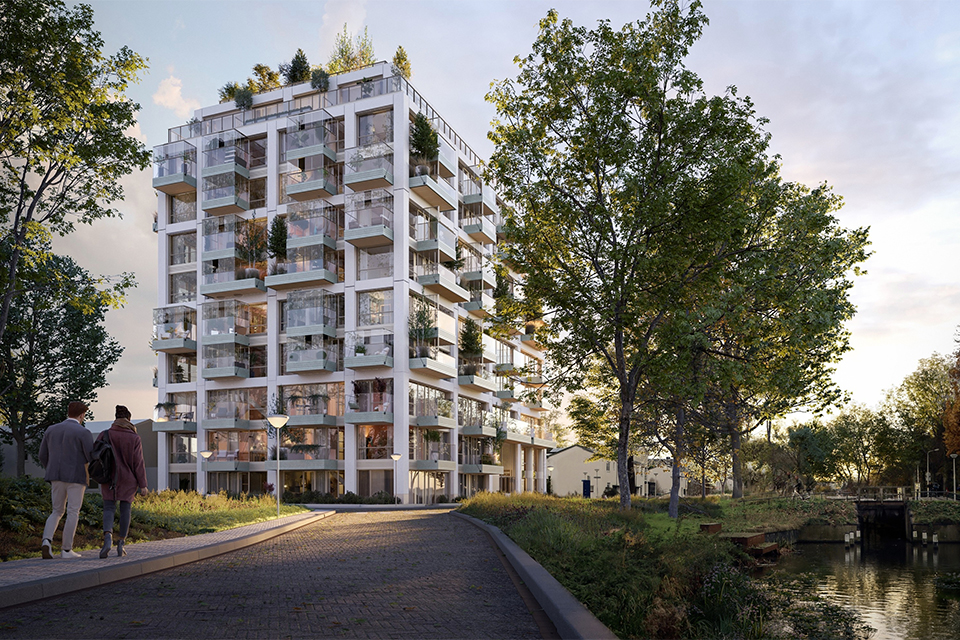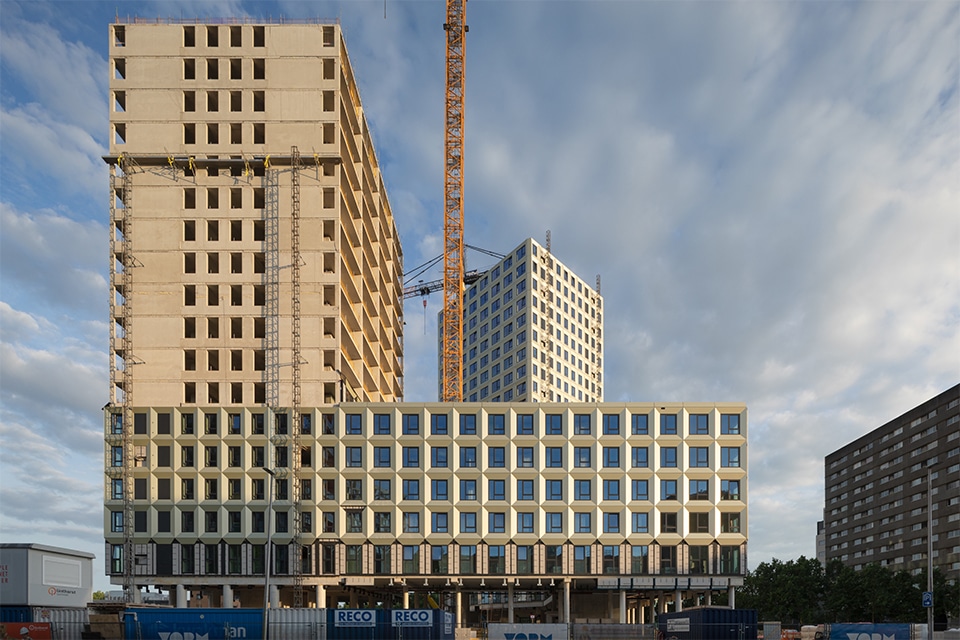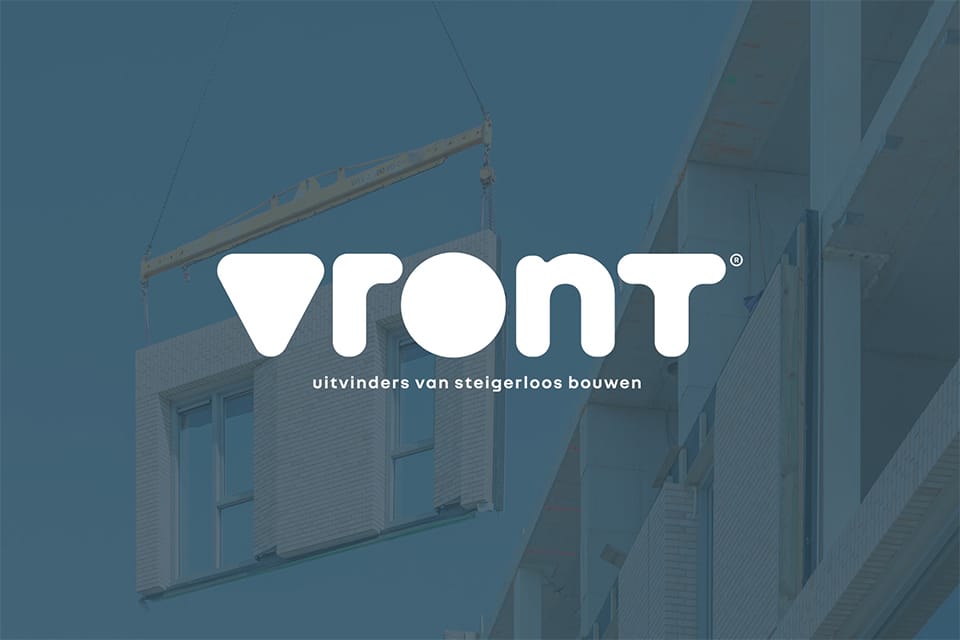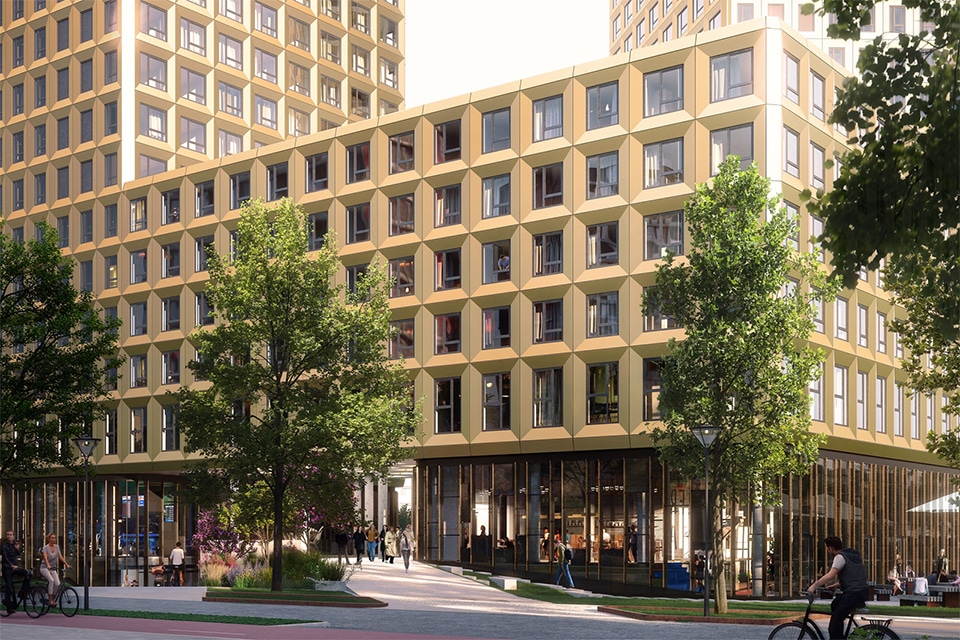
Maas Delta Tunnel and Holland Tunnel connect Vlaardingen and Rozenburg
Both the Maas Delta Tunnel (MDT) and the Holland Tunnel (HOT) are part of the Blankenburg Link, as the new A24 highway is called. The Maas Delta Tunnel will be located under the Scheur east of Maassluis and Rozenburg. The tunnel will be 945 meters long and will consist of two tubes with a middle tunnel channel between the two traffic tubes. There will be three lanes in each tube and a fourth lane (crawl lane) for freight traffic at the tunnel mouths. The Holland Tunnel will be a land tunnel of no less than 510 meters. Construction is made possible in part thanks to the underwater concrete floors being realized by DISA International.

"DISA International operates worldwide in various sectors where subsea work is required," says Managing Director Didier de Graaff. "One branch of DISA International is DISA Civil Construction. This branch specializes in underwater work for structures, repairs and maintenance of infrastructure objects." At DISA they are used to a bit, but even for a company like this, the Maas Delta Tunnel is a huge job. So there is a lot involved. Early on, DISA and client BAAK held regular consultations in order to be able to carry out the underwater work as efficiently as possible. For MDT and HOT combined, DISA is working in twenty construction pits of various sizes and depths.
Before DISA International could start work, the sheet pile walls were placed, the anchors drilled and the building pits excavated. Before the excavation, DISA was already closely involved in the process. After the building pits were completed, DISA was able to begin measuring, cleaning, adjusting and lengthening the anchors. After all this preparatory work, gravel was spread as an underlayment for the overlays and as an additional silt trap during the concrete pour. On top of that came reinforcement nets and then underwater concrete was poured.

"Pouring the concrete was the icing on the cake," says John Penson, Operations Manager at DISA Civil Construction. "All the work is in preparation for pouring the underwater concrete. All sheet pile walls and anchors are being hosed down underwater for the purpose of concrete adhesion." In early July, a total of about 6,000 m3 of concrete was poured in one of the construction pits for 90 hours. Such concrete pours are carried out in one continuous process, where the supply of the concrete is of great importance to monitor the quality of the floor during curing. Through a specially developed pouring system, the concrete was pumped to the bottom of the construction pit. During this process, divers carried out inspections.

Additional divers needed
The floors of the tunnel will be as much as two meters thick. When the concrete in the construction pit has hardened, the water can be pumped out and the tunnel can be built in a dry environment. Work on the Maas Delta Tunnel began at DISA a year and a half ago and will continue for at least another year. "Given the client's schedule, a lot of manpower is needed," says Marc Dröge, General Manager at DISA Civil Construction. What makes the execution of the works even more challenging is that most of the work will be carried out at 29 meters below sea level. At these water depths, DISA uses special breathing gas mixtures to achieve longer dive times and shorter decompression stops. There are five decompression tanks on the project at strategic points, including one for surface decompression. This also allows divers to dive for longer periods of time.
"An additional problem on this project was the deployment of multiple diving teams to stay within the BAAK time frame," Dröge continues. "To be allowed to work as a professional diver in the Netherlands, you have to have taken a number of special training courses. To start working as a foreign diver in the Netherlands, several complicated procedures must be followed. Given the crowded Dutch diving market and the demand for multiple diving teams, we have appealed to our international partners to bring in divers from Spain, Italy, France and England. As a result, we are currently working day and night with more than 130 divers on the project."

Kudos to the organization
Tight planning and coordination is required for all dive crews to work efficiently. Executives instruct the teams and distribute tasks. The teams, including individual divers, are each assigned their own independent and specific work, including, for example, the raising of anchors. "Per construction pit there are about 6,000 anchors in the ground. These anchors protrude 20 cm above the bottom. Divers first remove the cement column around them after which a coupling sleeve and lifting rod with dishes are mounted. These weigh 50 to 200 kg and are needed to anchor the concrete," Penson explains. Another common task is to perform underwater welding. For this, DISA is AWS- and ISO-certified. Says Penson, "We often weld nails on piles and perform various sheet pile repairs."
DISA is one of the few companies that can do the underwater work of such a project as this. It has the people and equipment for it. Dröge: "This is among one of the largest projects we have carried out in the past 15 years. For this we had to expand solidly. For example, we had to expand our diving systems to thirty individual diving systems. Some of the equipment had to come from the United States, United Emirates and Singapore. There are still very many different other disciplines needed during such a project, such as housing, local transportation, flights, visas, enlistments, meals, SHE-Q, procurement, HR, Q&R, etc.. For this, our planning, execution, offices; the entire organization definitely deserves kudos. The project is going very well so far."

Helpful
DISA's client is BAAK, a consortium of Ballast Nedam, DEME Group and Macquarie, which is carrying out the project on behalf of the Department of Public Works. The cooperation has been satisfactory, thanks in part to the understanding and helpful attitude of BAAK's staff. "When we need help, we get it. For questions we can go to the employees of BAAK. The cooperation is very pleasant," Dröge said.



